The most MOVING SUICIDE SCENES

WARNING: THE TEXT CONTAINS MANY SPOILERS!
Some fight for their lives, others take them. This statement also applies to movie characters. In such iconic titles as Rambo: First Blood, the script originally assumed the suicide of the protagonist. Suicides on the screen are an excellent topic for an exhausting diploma thesis in the field of film studies. Because usually this dark, depressing phenomenon is associated with a dramatic human situation, mental breakdown, desperation, loss of hope. However, these are not always decisive factors. A suicide in a film can be a prologue shaping the further plot and giving meaning to the story’s issues, it can be a vestibule in building drama in the narrative structure (The Sixth Sense, Lethal Weapon). It can also mean a breakthrough element in the middle of the film based on the resolution of a conflict or the appearance of another obstacle, e.g. (No Way Out, A Few Good Men). In the end, it becomes the climax, the completion of the story (Alien 3, Fallen).
Below is a subjective list of selected fragments of film suicides. I did not include titles such as The Happening or Bird Box, in which numerous suicides are the main plot of the film. The order of the selected movies is random, so I did not use numbering.
The Deer Hunter (1978)

Michael Cimino’s work is the first vehemently anti-war film about Vietnam, about the impact of war on the psyche of its participants. This is nothing new nowadays, but when the film premiered, it caused heated comments and protests. At the festival in Berlin, the leaders of the socialist countries did not hide their indignation during the screening, and Jane Fonda, receiving an Oscar in the same year for the main role in the similarly themed film Homecoming, accused Cimino of racism and propaganda. It was about the infamous scenes of Russian roulette, which American POWs held by a Vietnamese detachment were forced to play. Although the main characters of the film managed to survive and return to the country, nothing was the same as before being drafted into the army. Friends returned physically and spiritually mutilated, unable to find themselves in the surrounding reality. It turns out that Nick (Christopher Walken, winner of the statuette) plays roulette of his own free will – the war trauma triggered in him the need to play with death. Michael (Robert De Niro in one of his best roles) in order to bring his friend home, must face him in a deadly game. When Nick’s memory returns, he deliberately shoots himself in the head, taking his own life. This is one of the few suicide scenes that has entered the world’s cinematography in capital letters. She was quoted in several productions and still arouses considerable emotions.
Full Metal Jacket (1987)
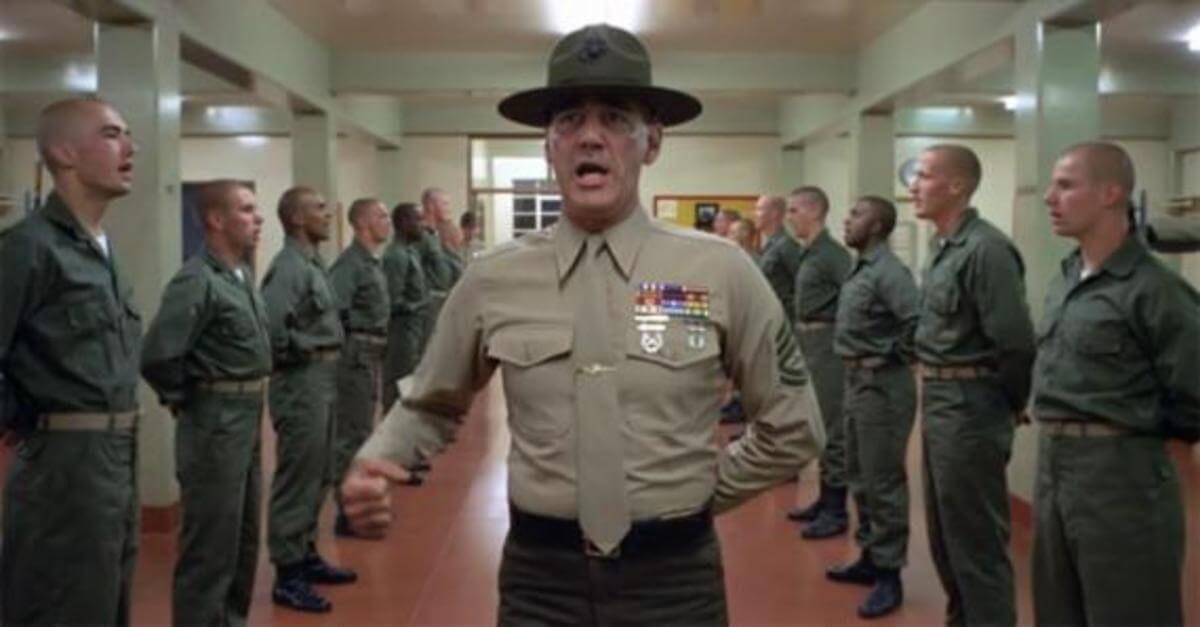
War again. Vietnam again. Injury again. This time we have shown the drama of a soldier before the war, during training. Stanley Kubrick himself tackled the subject, creating an important Vietnamese painting, although not on the scale of such classics as The Deer Hunter, Apocalypse Now or Platoon. The film is divided into two stages: military training and battles on the battlefield. The course taught by Sergeant Hartman (R. Lee Ermey’s iconic role) is all about name calling and mindless drill. His goal is to turn a group of recruits into passive killing machines. The rigor drives one of the cadets insane. Private Pyle, an obese and initially clumsy candidate for a professional soldier, becomes Hartman’s main fodder for drill. He becomes the company’s scapegoat until he makes significant progress. Finally, training comes to an end and the freshmen are assigned to their units. There is a tragedy. Pyle, insane and armed, holed up in a latrine (Vincent D’Onofrio resembles Nicholson in The Shining). Staffmate Joker tries to calm him down when Hartman shows up. Pyle opens fire on the sergeant, then shoots himself in the mouth with a rifle in front of the Joker. The private seemed to hide his madness for a long time, it seems that he was waiting for the right moment to massacre his colleagues and the sergeant, so he filled the rifle with all the ammunition. The appearance of the Joker, the only cadet who supported him, in the restroom, cooled his murderous impulse a bit. This scene is also a gem of its genre; of the entire film, it is the most memorable and should be considered one of the best moments in Kubrick’s entire filmography.
Mulholland Drive (2001)

Like almost every film by David Lynch, this one also leads to various interpretations and guesses. The basis here is a mysterious relationship between two actresses in the strange labyrinth of the film industry. Sleep mixes with reality, and we see the world on both sides of the mirror. Diane (led in style by director Naomi Watts) dreams of a career in Hollywood, meets Rita, who suffers from amnesia after an accident. Both women will be connected by romance and a dark secret of the subconscious. In fact, it is a story of unfulfilled dreams and unfulfilled love, where the factory of dreams becomes the key to a nightmare. Diane/Betty, who is in love, is rejected by the bride who becomes engaged to filmmaker Adam. A jealous woman orders her to kill her. The final scene is full of anxiety, taken from a dreamlike horror. Diane is tormented by remorse, she is at the end of her endurance. There is a knock on the door, a shrill scream, double laughter and a shot. After a while, the scene repeats itself, but you can see it in its entirety. Diane knew what was coming, and now the viewer can see it for herself. In the simplest of words, Diane commits suicide because of guilt in the form of two old men who could symbolize Rita’s parents. The blue box, on the other hand, means Pandora’s box, i.e. the dark side of human desires that lead to inevitable doom.
Crash (1996)
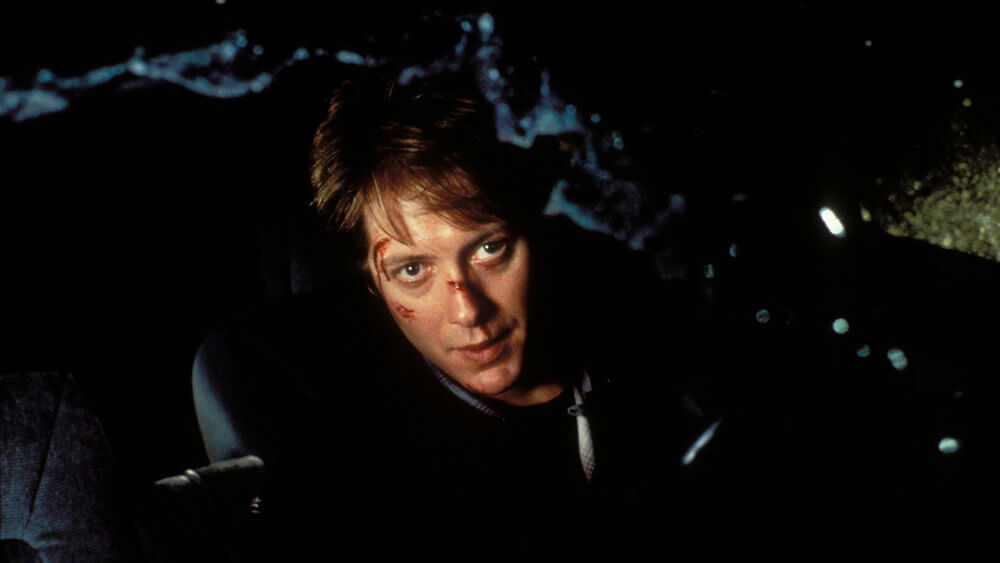
David Cronenberg loved to explore self-destructive motives, so it’s no wonder that at least one of the Canadian’s proposals had to make it onto this list. It fell on Crash, which still remains perhaps the most daring and abnormal position of the baron of body horror. In the film based on the novel by James G. Ballard, the union of man and machine is devastating. The characters in both the film and the book seek sexual gratification through car accidents. A vehicle crash bringing victims sexually stimulates them, and they themselves are heading towards death as a result of the collision. Vaughan (the disgusting Elias Koteas) is the first to go to extremes, driving the whole morbid merry-go-round. His “protégés”, James and Catherine, driving along the road, join the traffic on the viaduct in the evening. At one point, Vaughan enters the road in his demolished car. Ignoring other drivers, he tries to cause an accident, he wants to push the couple’s car. Unexpectedly, he realizes this intention, but on himself. The unbalanced driver swerves sharply off the road. James stops, gets out of the car, and sees the car, along with Vaughan, fall off the overpass straight onto the passenger coach, which bursts into flames. The man had no chance of surviving. James does not hide his astonishment, and his wife clearly erotic arousal with the whole event. Both will want to follow in the footsteps of their “guru”. Eros and Thanatos get behind the wheel and start their journey.
The Rules of Attraction (2002)
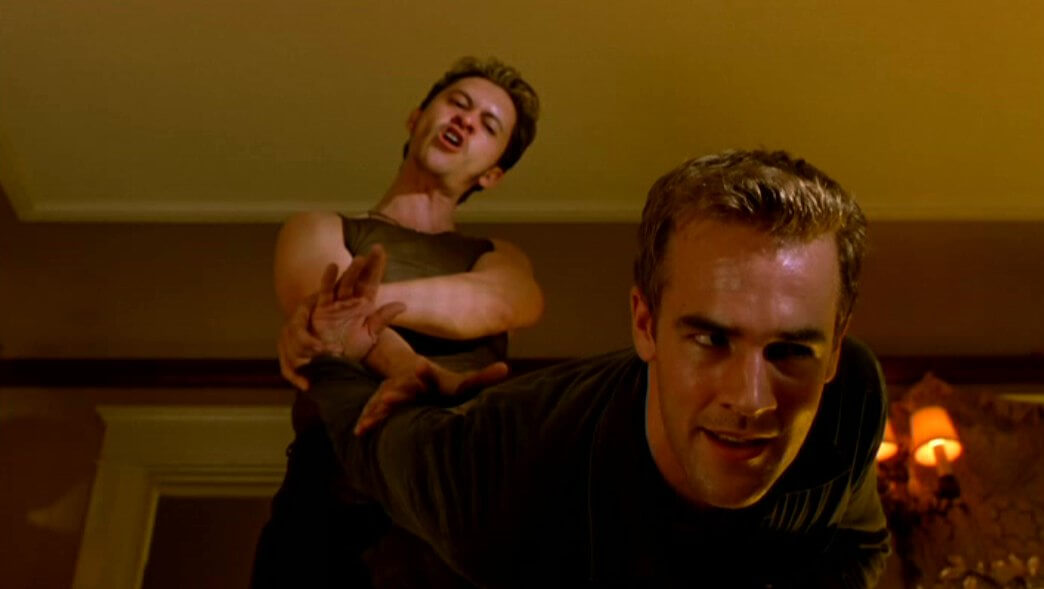
Roger Avary did not make a career in the film industry, but he started promisingly, among others, as an associate of Quentin Tarantino. The director had quite a lot of potential, which can be seen in the film The Rules of Attraction, a sarcastic student drama. We are in an environment of American college students who make learning more enjoyable with a hedonistic lifestyle, and in fact mask their emotional failures and mistakes. In the foreground is Sean (Patrick Bateman’s book brother) a senior, drug dealer and, to put it bluntly, a piece of asshole. But he too will turn out to be a lost character, longing for true love. Sean is the love interest of an unknown admirer who showers him with love letters. The boy is convinced that she is a friend from the “bench”, with whom he develops acquaintance. It’s different. The secret suitor turns out to be a shy brunette who works in the cafeteria at the university. It is she who takes her own life because of unrequited, platonic love to the beat of Harry Nillson’s song Without You. A girl slits her wrists in the bathtub after a party where Bateman flirted with a popular blonde. Up to this point, the film seems like an uninhibited satire on student life, but after this sequence, the screening becomes much more compelling. Fun Fact: An almost identical scene was recently removed from Netflix’s 13 Reasons Why for fear of negatively impacting maturing and troubled teens.
Omen (1976)

I was wondering what else to put here. Should we choose the suicide death of father Karras from The Exorcist or choose another scene from the satanic trend, such as the suicide of Charlize Theron from The Devil’s Advocate. It stopped at Richard Donner’s Omen. Alfred Hitchcock’s formula “first an earthquake, then the tension rises” can be successfully attached to this sequence of the first installment of the antichrist series. It’s about the death of Damien Thorn’s nanny. I can imagine how this scene was chilling at the time the movie was making its way through theaters. Today, it may not work as much, but it can still cause quite a thrill. It’s an outdoor party: high-status guests sip drinks and chat, the kids play with the clown or on the merry-go-round, and the weather is fine. But something is in the air. Baby Antichrist’s babysitter appears on the edge of his parents’ property. With the noose around his neck, he throws himself out of the window, preceeding his act with words of utter, fanatical admiration for Damien. A moment earlier, she had contact with a Rottweiler who guards the boy like Cerberus. After the death of the nanny there is a shock, but only for a moment, the children scream in fear, but only for a short moment, then they stare blankly, and we also see the grim look of a clown. With the exception of Damien’s mother, it might seem that the event did not make much of an impression on those attending the party. It looks as if they were accomplices in a satanic conspiracy, like the neighbors of the main character of Rosemary Baby.
Terminator 2: Judgment Day (1991)
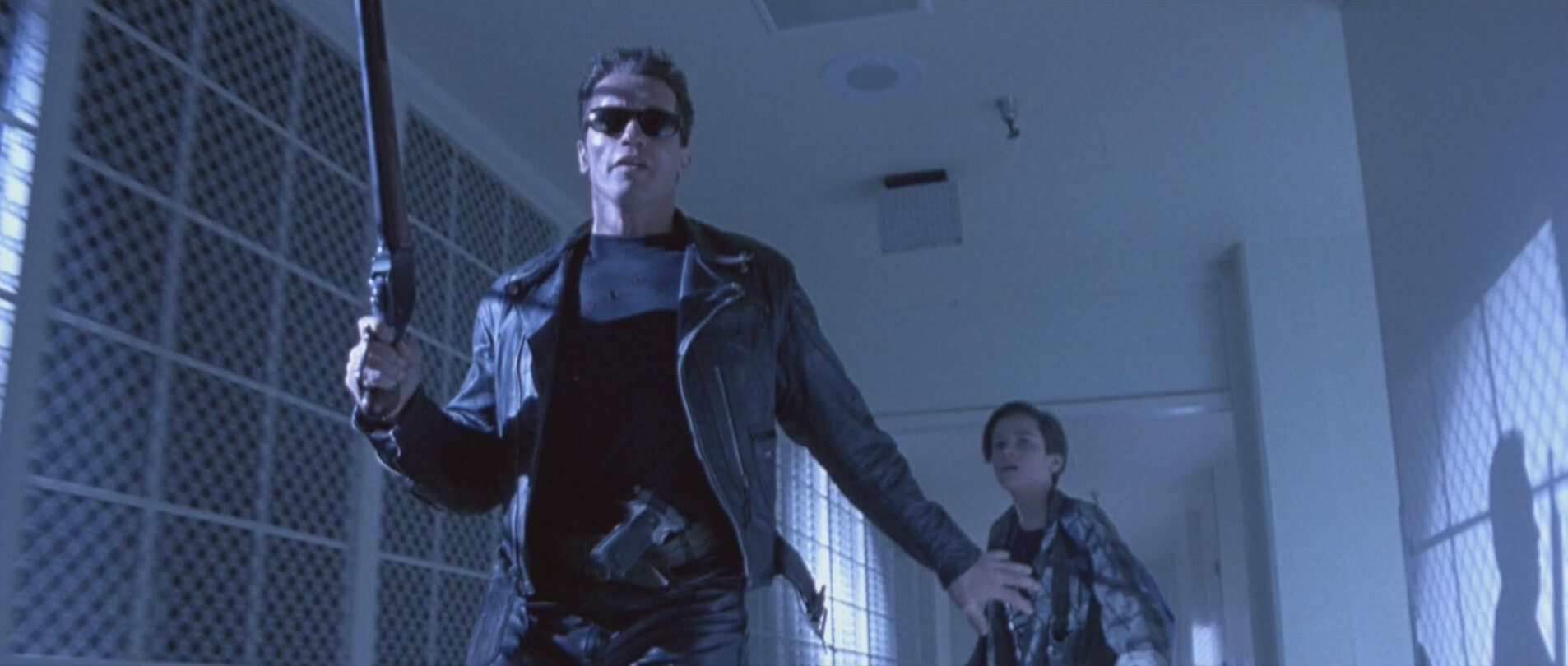
There is something to mention. I am convinced that not only fans of this immortal hit come back with a sentimental tear in their eyes to the final scene. In the first part of James Cameron’s blockbuster, the cyborg in the form of Arnold Schwarzenegger was supposed to be terrifying as a steel killer devoid of human feelings. In “Two”, the T-800 returns as the protector of humanity, a machine that tries to learn human reflexes. What’s more, for John Connor he becomes a father figure, which is emphasized by Sarah Connor, sharing the words that the Terminator will never let him down, he is ready to give his life for her son. The viewer is so convinced by this that the cyborg’s death in the finale can move even the toughest guys. The very moment of the duel with the T-1000, which gains a significant advantage and hits Arnie’s skull several times with a mechanical press, triggers sympathy for the cybernetic ally. However, when the antagonist is finally stopped and dies in a large vat, T-800 announces that he must submit himself to annihilation as well. John Connor disagrees with this solution. He loved his defender like a father. Pleas to change his mind seem to be in vain, the Terminator asks Sara to lower him by crane into a pool of liquid fire. As the cyborg dives into it, Sarah is impressed that the human-coated machine that tried to kill her years ago by obliterating everyone in its path is sacrificing for a just cause more than a real human. Anyway, watching this scene, we even forget that the Austrian is playing a robot. And that thumbs up as a symbol of hope for a better future for humanity. Was it necessary and sensible to make further parts after such an ending? Definitely NOT!
Arnold Schwarzenegger, the invincible screen hero, has devoted his life to yet another film End of Days.
Martyrs (2008)
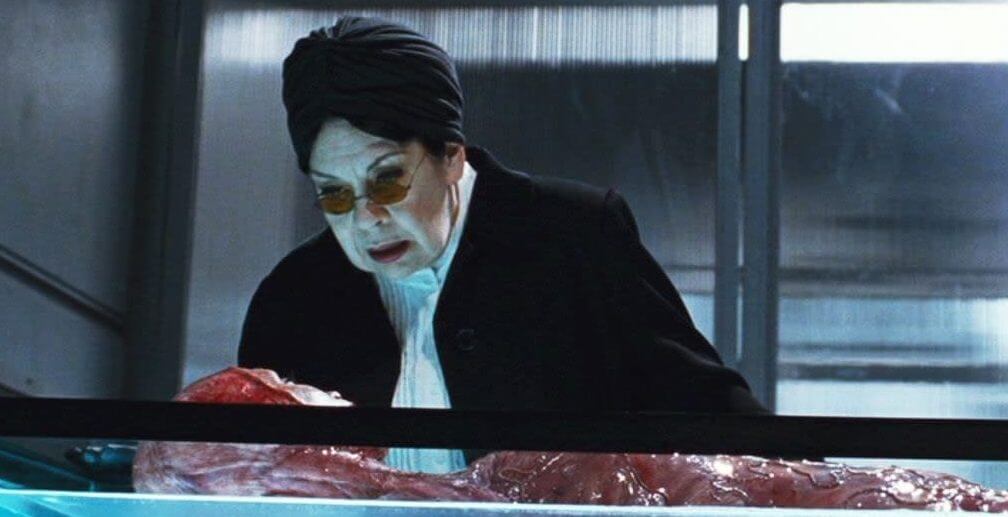
Pascal Laugier’s film consists of scenes of torture and bloody violence, seemingly unfounded. Two girls end up in a certain household – one of them seeks revenge, the other wants to dissuade her from it. A bloodbath begins, the characters cut each other with knives, scream, race through the rooms and corridors of the apartment. The gore is pouring in streams, the corpse is densely littered, and there is chaos around. This leads to a change in the script, a new plot related to the first part of the film appears. We see the meaning. Mademoiselle arrives at the scene of the massacre, leading a sect whose goal is to inflict maximum suffering on its victims. This is to answer the fundamental question: what awaits us after death? Only a person in a state of transcendence has the ability to answer. Her partner drives one of the girls to such a state. The leader of the sect learns the revealed truth, calls a meeting during which she is to announce her knowledge. To everyone’s surprise, at the moment when we are about to learn the secret, the woman … shoots herself in the mouth with a gun. It is a rather puzzling suicide if we compare it with the literal (to put it mildly) sequences that the film stunned almost throughout the entire projection. Why did she do it? What did she find out? There are several hypotheses. “If people were absolutely sure that after death they would have eternal life in heaven, in paradise, where happiness is undisturbed, everyone would take their own lives to get there.” Perhaps guided by this thesis, the woman shot herself without revealing the information, because she herself wanted to find herself in the land of eternal nirvana as soon as possible. The second variant: on the other side there is nothing, only absolute nothingness. All efforts were in vain and the tormentor could not accept it. There is a third possibility: after life there is hell, a black abyss, endless torment. Mademoiselle wanted to experience it herself and punish herself in the process.
Seven Pounds (2008)
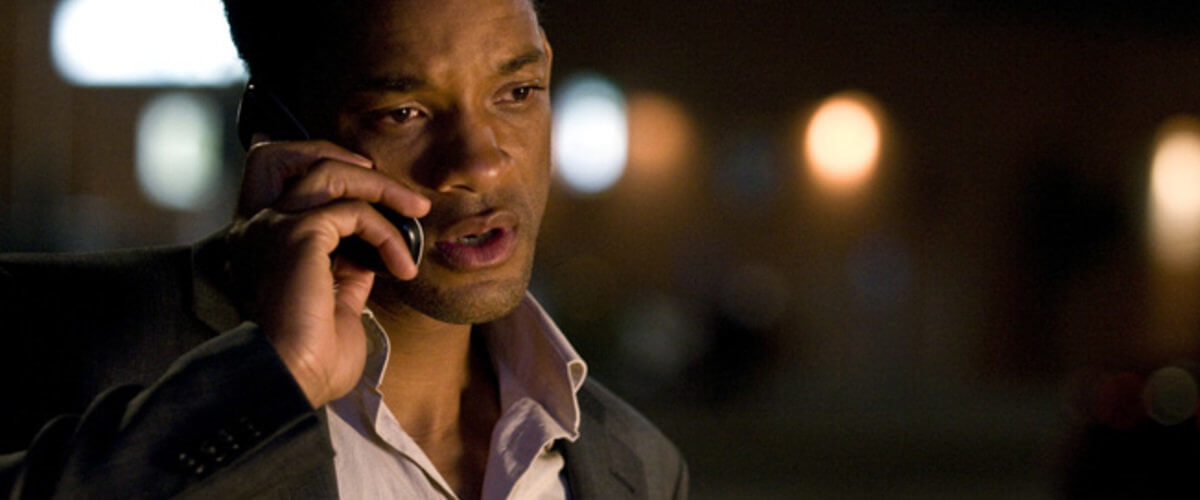
For some, a maudlin melodrama of atonement with forced, cheap tricks and Will Smith’s sore face, for others a touching account of sacrifice and redemption. Everyone is right, but the ending of this movie, especially the scene of Ben Thomas’s suicide, is among the most original when it comes to moments like this. The main character is actually planning to take his own life all the time after the car accident he caused. He survived, his family died along with other people – a total of seven people lost their lives. The sense of Thomas’s further existence becomes helping seven people who, in his opinion, deserved it. One of them is Emily, waiting for an urgent heart transplant. Ben falls in love with her, but as in Leaving Las Vegas Figgis, love will not be a salvation for the hero. Will Smith’s character decides to take his own life to save his beloved. He calls an ambulance and climbs into an ice-filled tub with a sea wasp swimming in it. Thanks to the fact that his internal organs remain undamaged, Emily will receive a healthy heart and will live. It would sound like a typical tearjerker – sacrificing yourself for love is a theme used massively in movies. Muccino’s picture does contain such elements, but the nature of the suicide combined with the flashback of the car accident gives them a whole new meaning.
Thelma i Louise (1991)

Feminist road cinema in the name of freedom. Two friends break away from the routine of their own lives and embark on a journey that will not only change their lives, but also … take their lives. Before that happens, both ladies will change their thinking, views and life attitude. Louise kills Thelma’s harassing suitor, forcing them to flee from the police. The situation is getting more and more serious, the women are not going to hand themselves over to the law enforcement officers, they decide not to go back to their old lives at all. You can say that they go against the flow, they taste freedom they have never experienced before, their friendship will also be sealed by female solidarity. How can this end for them when they refuse to let themselves be arrested, the police chase intensifies and their escape route ends? The friends are trapped, they reach the cliffs of the Grand Canyon, followed by the police guard waiting for the command: shoot. There is also a good-willed officer who wants to apprehend fugitives without bloodshed. However, they won’t back down. They give gas to the metal, rushing straight into the abyss … Interestingly, the viewer does not feel discomfort or sadness during this scene. It is even perceived as a happy ending, because it was constructed in an uplifting rhythm. Although the heroines died, they decided it themselves, carried by the euphoria of freedom that stayed with them until the very end.
House of Sand and Fog (2003)
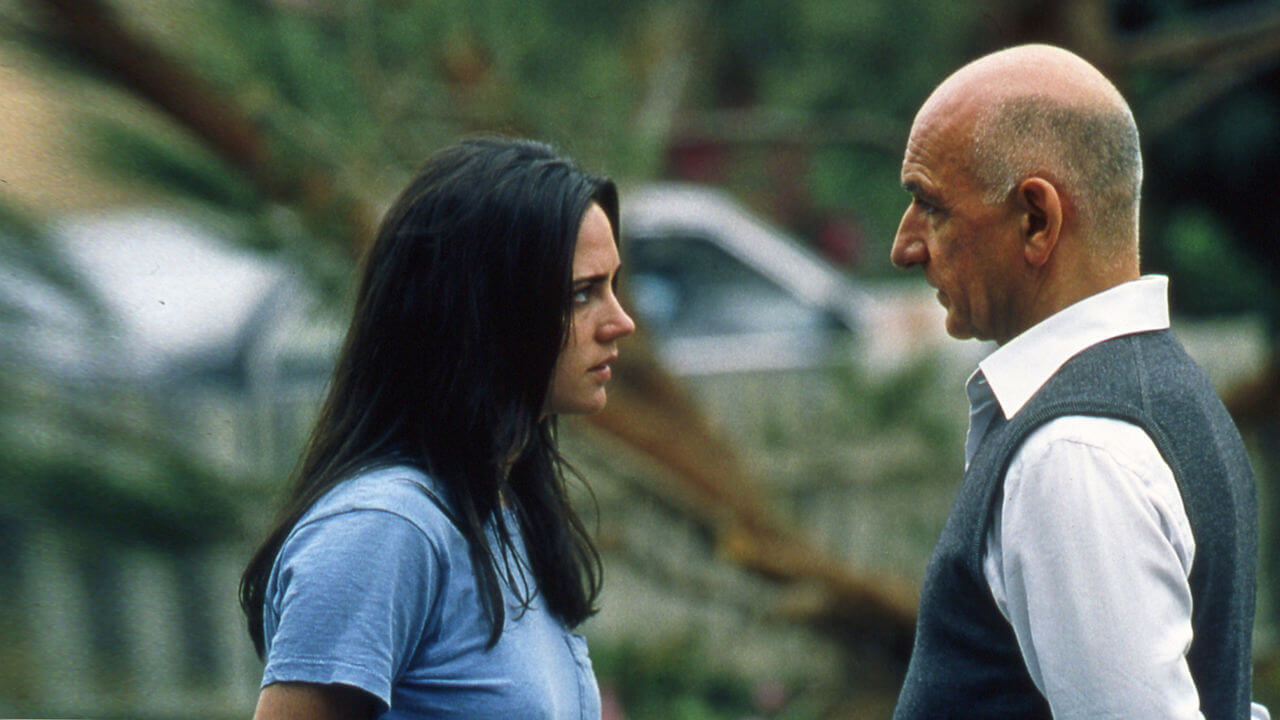
Vadim Perelman’s drama based on the book by Andre Dubus presents a high level due to the combination of the commercial possibilities of American cinema with the artistic ambitions of European films. The advantages of this production are the credible performance of the actors, the engaging plot and, above all, the dramatic ending. Jennifer Connelly stars as a depressed and addicted woman whose house is taken over by a bailiff. The buyer of the building is an immigrant from Iran, Amir Behrani (Ben Kingsley’s podium), who was a respected and important citizen in his home country, and in the US fights for his own and his family’s dignity. Kathy, wanting to reclaim her home, gains an ally in the person of a police officer who is in love with her. Unfortunately, the sheriff’s overzealousness leads to tragedy. When a deal between the woman and Behrani seems likely, Amir’s son dies as a result of poor judgment. The desperate father loses the meaning of life, and the house, which was a bone of contention, no longer matters. It becomes a place of taking one’s own life with the hallmarks of honorable suicide. Amir and his wife lie down on the bed, hold hands, blocking the air supply. The suicide of a marriage caused by the death of a beloved son is also inseparable here from the national pride emanating from Amir. In the form of flashbacks, we see flashes of the past, cutscenes, spatial shots, captivating views of the sea beach, giving beauty to this dramatically sad scene. Of course, one can sense the mood of pathos and excessive solemnity, which, however, does not change the fact that this fragment is capable of leaving a mark on the viewer’s sensitivity.
The Seventh Continent (1989)

And this time there will be no happy ending. Michael Haneke is a cool observer of uncomfortable realism, the creator of the cinema of social anxiety. Before the Austrian gained fame thanks to the films Funny Games or The White Ribbon, he drew attention with The Seventh Continent, where he described the loss of human communication and emotional repression in his style. We have a family portrait. Father, mother (names same as parents in Funny Games), daughter. Life goes on as usual, without major problems, except for the girl’s asthma. Finally, there is a crack. The family decides to go on a trip that is really a one-way trip. First, they destroy their possessions – they destroy their own apartment, get rid of money; only the TV remains intact. A mother makes a drug cocktail and gives it to her unsuspecting daughter. After some time, the woman makes the same drink for herself. The hits of Jennifer Rush and Meat Loaf scroll through the receiver. Songs about love. Was this love lacking in the family, or was it the ability to express it? A young mother reacts with despair at the sight of her dead daughter, and then drinks the dissolved medication herself. The husband watches TV at this time, but after his wife’s death, he follows in her footsteps. He writes names and terms on the wall beforehand. The picture on the TV is blurry. The viewer asks himself: what was the reason for this collective suicide? Psychic emptiness or spiritual atrophy? The director does not give a clear answer. It provokes one’s own conclusions and considerations. The film was based on an actual event that Haneke read about in the press. This is one of the cases where a real suicide served as the basis for the film material.
Midsommar (2019)
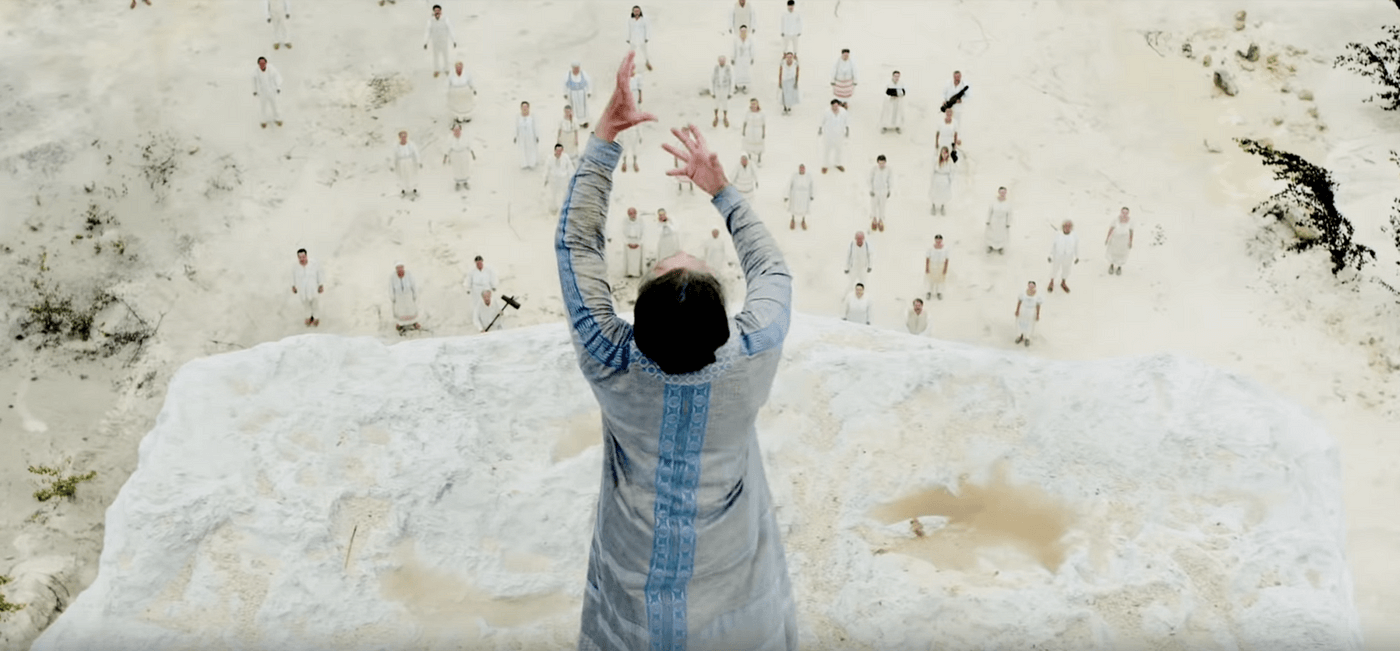
A little cheating, actually an edit, to add to the topic, because the whole list of movie suicides doesn’t matter without including episodes from Ari Aster’s folk horror. Midsommar he talks about trauma, experiencing catharsis, grotesque and absurd moments are adjacent to deeply disturbing sequences that get stuck in your head and stay for a long time. I mean the first act, a committed suicide extended by the main character’s sister poisoning herself and her sleeping, unaware parents with carbon dioxide. In the apartment, under the cover of night, firefighters pack the corpses into bags and find the dead girl near the computer on which she corresponded with her sister for a moment before the tragedy. In the background, howling, unsettling music, flashing and reflecting lights in a room drowning in darkness. Dani and her partner join a sect practicing their rites in Sweden. In the second act of the film, two elderly members of the commune commit suicide. They perform a jump from a high cliff in front of witnesses. The scene is bone-chilling, highlighted by hypnotic shots of hills from different angles and lurking haunting sound. The elderly woman who sacrifices herself first, stands on the edge of the abyss, looks up at the sky as if communicating with someone from the otherworld and gives Dani a creepy look, only to throw herself off a cliff smashing his skull as he fell onto a boulder. An elderly man follows in her footsteps and manages to survive completely breaking own legs. He is finished off with a hammer by the sect’s leaders. Such traumatic experiences are later reflected in the heroine’s nightmare of the death of Dani’s family, coupled with a terrifying ceremony in the sunlight of the previous day.
Clergy (2018)
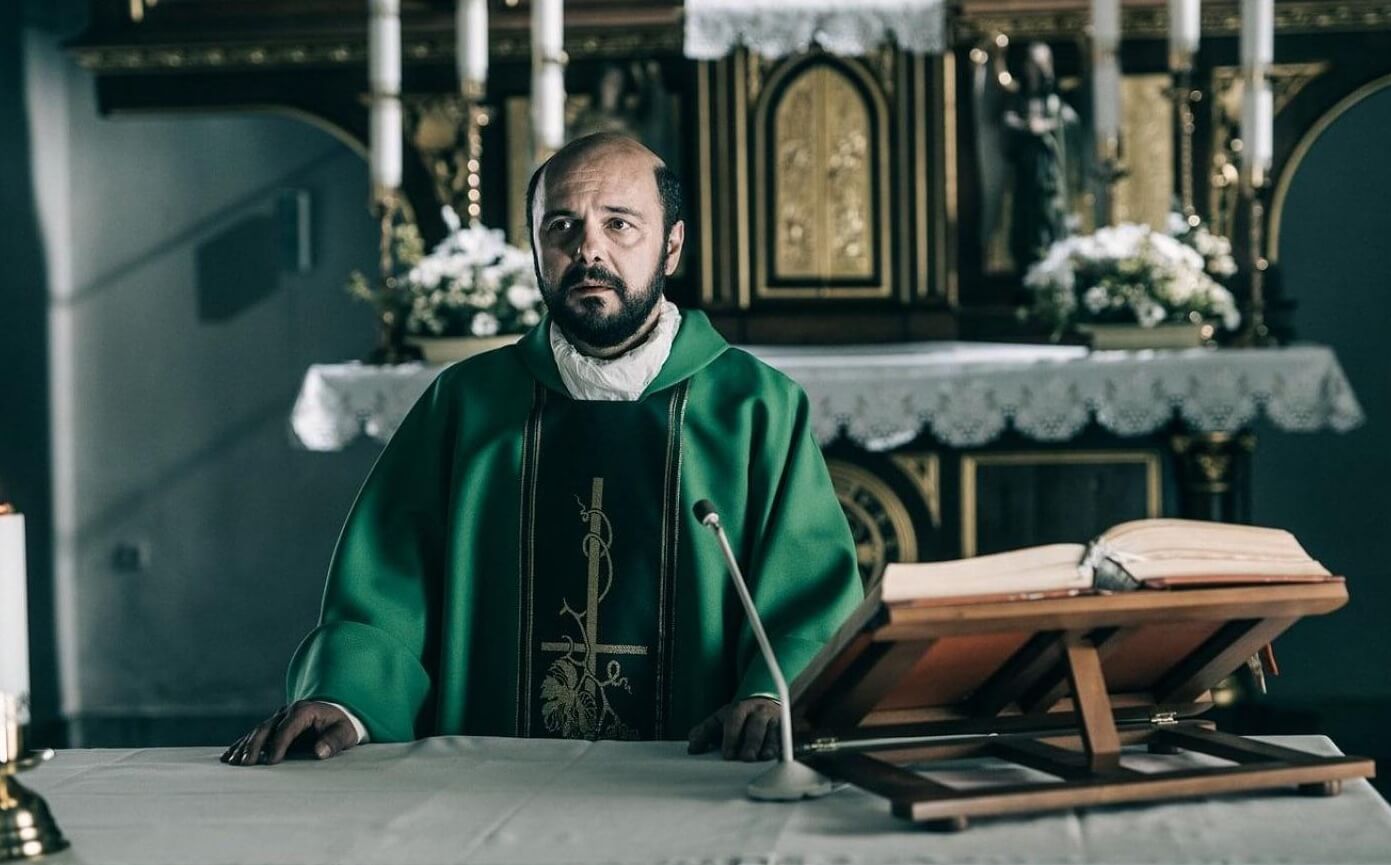
Polish productions also contain suicide scenes, more or less convincing. I think that the ending of the film Clergy stands out the most among Polish works; not only because of the subject and importance of the circumstances. Wojciech Smarzowski made a film touching on a current, widely discussed problem, he broke the conventions and slapped the institution of the Church in the face. He created a morality play about clergymen, exposed their sins and weaknesses. In Smarzowski’s lens, representatives of the Church are driven by lust, pride and power, but the director does not take away their human face and tries to defend his characters on the screen. The most dramatic character in the picture seems to be priest Kukuła (Arkadiusz Jakubik confirms his acting credibility). Accused of pedophilia towards his altar boy, he almost gets lynched and turns out to be a victim himself. A victim of the institution he serves, its rules based on hypocrisy and hypocrisy. Sexually abused in his childhood, he wants to put an end to the hypocrisy of Church dignitaries and reveal the truth. As a result, he is considered a madman, and the distortion of the facts condemns him to exclusion, pushing him out of the community. Driven to extremes, a priest blends in with the crowd during an important, long-awaited and prepared outdoor mass. While Mordowicz preaches about goodness and sacrifice, Kukuła pours gasoline on himself and commits an act of self-immolation in front of the faithful and clergy. Shocked people do not try to extinguish it, they run away in panic or record the incident with their phone, Kukuła burns until he finally drops dead. His body takes the sign of the cross. Suicide by burning is a manifest, desperate cry, an extreme attempt to draw attention to the abuses of Church authority. I have to admit that the scene hits the head with a hammer, forcing us to think about the condition of our society.

